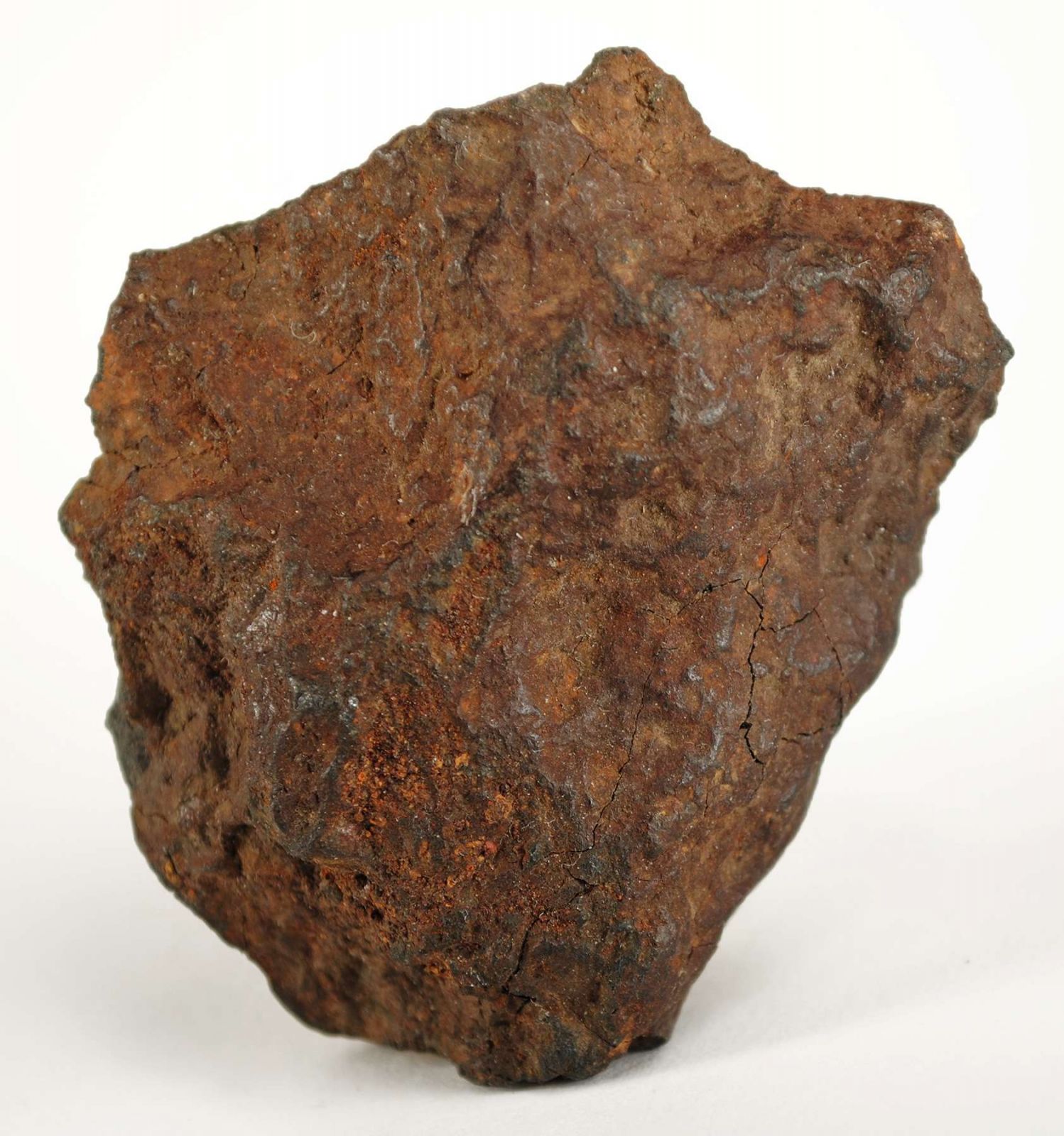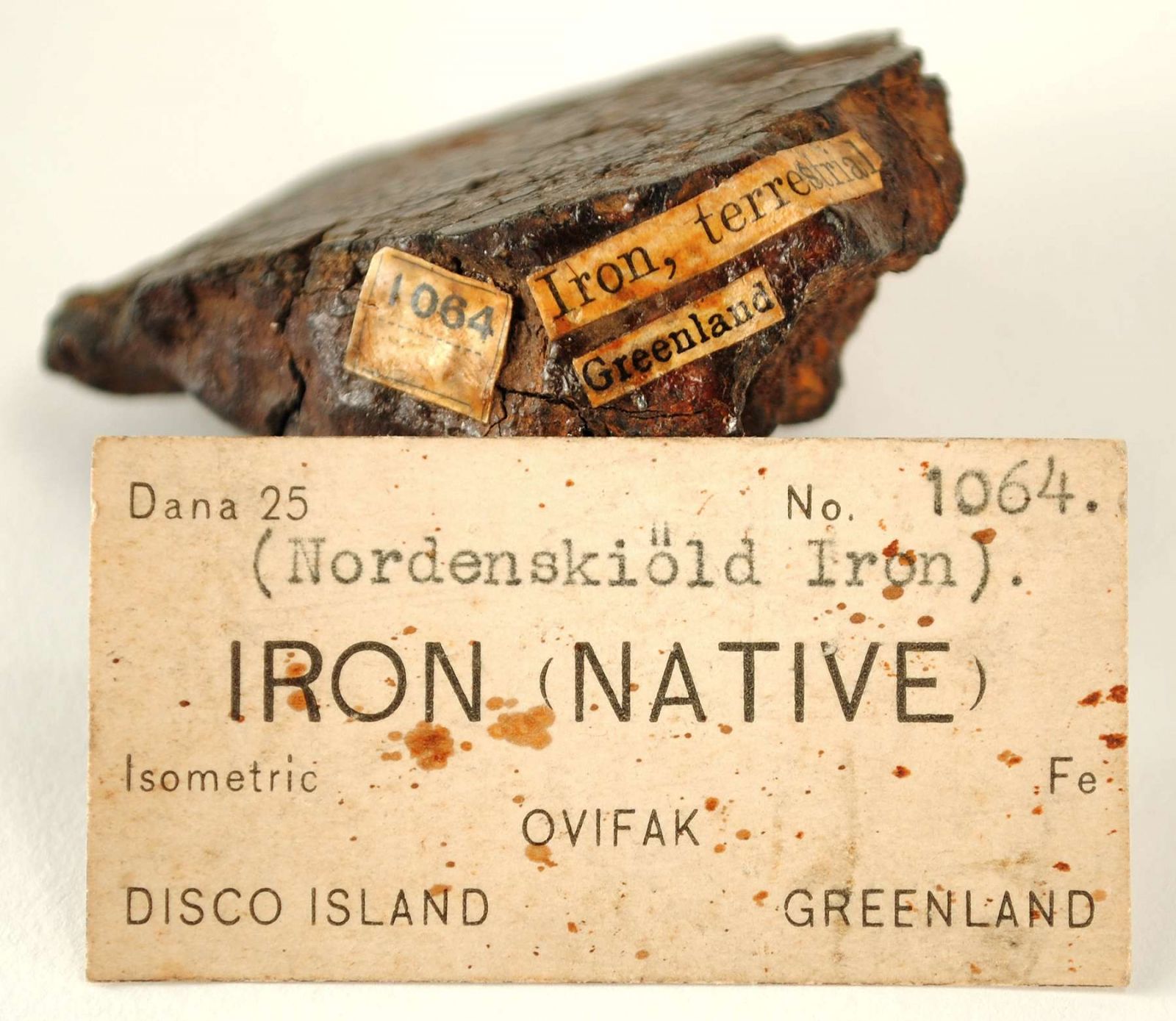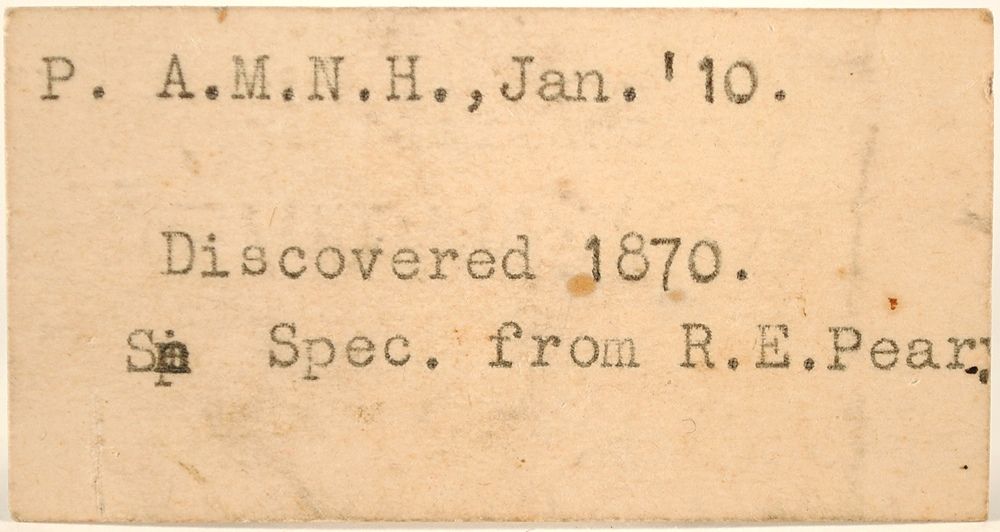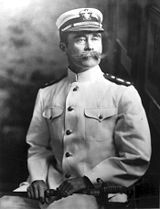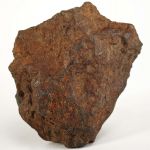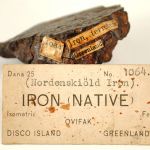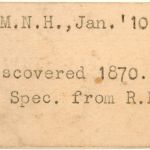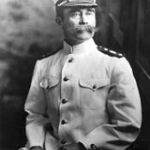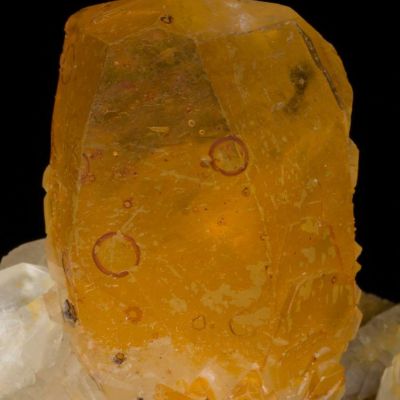- TUC104-27
- Native Iron (Ex. Amnh From Robert Peary Expedition, 1910)
- Ovifac, Disco Island, Kitaa Province, Greenland
- Small Cabinet, 6.1 x 5.1 x 2.1 cm
- Ex. American Museum of Natural History; Lawrence H. Conklin
- SOLD
The specimen comprises half a nodule of basalt containing elemental iron. It may not be pretty, but this is an important specimen for the species, element, and for historic geology. Native iron is extremely rare in igneous rocks, even though it forms the majority of the earth's core. Here we have an extremely rare mass of terrestrial native iron in rock from the remote Disko Island. Much native iron on the earths surface is in fact extra-terrestrial in origin. This is from the Type Locality occurrence for native terrestrial iron (according to MINDAT), remote Disko Island in Greenland, and is richly speckled with bright, metallic native iron in basalt matrix. This is old, rare, and seldom seen material. Beyond that, this particular specimen has a fascinating history: it has old, yellowed labels glued to it which match the numbering on the associated AE Foote (1846-1895) label and reflect his penchant for cutting out and gluing label strips to specimens (see link for more information). The style of this label dates it to approx. the late 1880s thru 1895 period of his business. The back of the old company specimen label has typed notes indicating this piece was obtained in purchase (P) by the American Museum of Natural History (AMNH) in 1910. The next line indicates that the source was discovered in 1870. The third line of type states that the museum obtained the specimen from R.E. Peary. Robert Edwin Peary (1856-1920) was an American explorer who claimed to have been the first person, on April 6, 1909, to reach the geographic North Pole. Again, pedigree aside, most native iron is extra-terrestrial. This one, however, is from some of the oldest crustal elements humans will ever access, and is a rare find to make it into the hands of specimen collections....with good history as a bonus! Traded out of the Museum in the 1980s, this piece has since been in the private collection of Lawrence Conklin.
